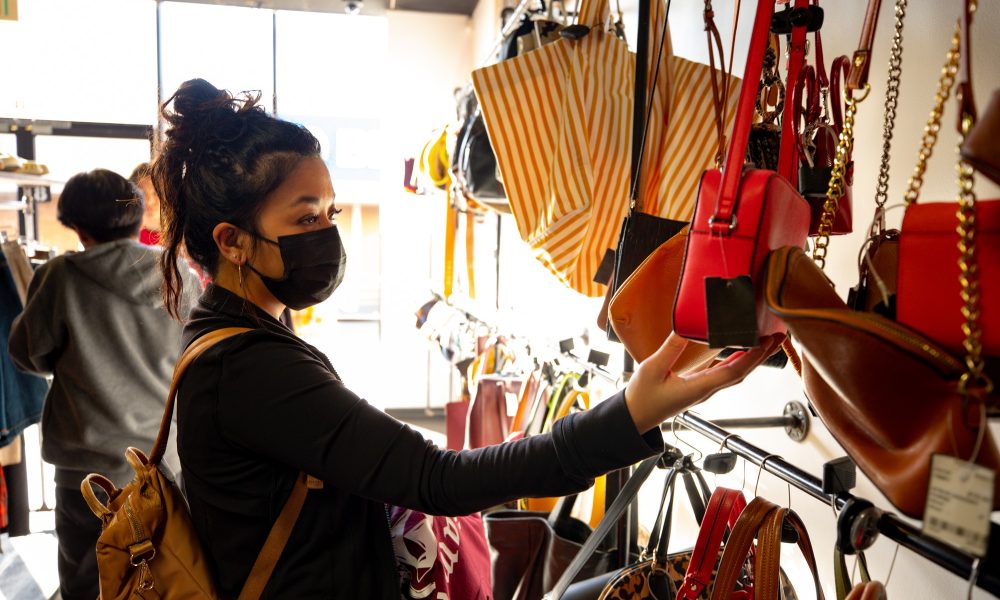Generation Z cycles through fashion trends rapidly. When a trend dies, consumers often donate their clothes to thrift stores, getting rid of them in a more environmentally conscious way.
Clothes that aren’t purchased at thrift stores are eventually sent to landfills. Depop resellers go to thrift stores and purchase the clothing, keeping clothes out of the landfill.
Resellers go into thrift stores and sift through clothing for hours. They look for whichever specific style of clothing their shop caters to, often trendy or vintage attire.
Resellers help thrift stores stay open by being consistent, high-spending customers. They give clothing a second chance before being sent to the landfill.
However, the prices at which resellers choose to sell their thrift finds can be shocking.
During a recent trip to Tattered, a local thrift store, I purchased a pair of overalls and an American Eagle sweater. I ended up spending $57, which was a little much, but Tattered is the kind of thrift store that buys higher quality clothing to sell.
The overalls I purchased are no longer produced and are considered vintage. Out of curiosity, I looked for the same overalls online to see what the pricing was elsewhere.
Reseller Nightofthelivingthreadz on Depop had the overalls listed for $85. The rest of their shop features other vintage pieces listed at similar or higher prices, depending on the brands and conditions of the clothing pieces. The difference in price from the overalls I bought is fairly reasonable, because they are vintage and no longer produced.
Those who resell brands like H&M, Forever 21 and Shein at higher prices are the real issue.
Thrift stores were originally created to offer lower-income people a place to purchase clothing and other items at an affordable price. Shopping second-hand has started to become more expensive because Depop resellers are driving up the prices. Thrift stores see reseller prices and raise their own prices in order to still make a profit.
Depop has also become oversaturated with drop shippers, posing a problem for those who are trying to shop sustainably. Drop shippers are businesses that upsell fast fashion, cheap clothing produced in large quantities to keep up with fashion trends, and other goods.
People who want to be environmentally friendly often choose to buy second hand, as to avoid promoting the production of more goods. However, due to Depop drop shipping, consumers may end up unknowingly buying brand-new garments that have devastating impacts on the environment.
The reselling market promotes fast fashion in more ways than drop shipping. Lower-income people can’t afford to keep up with the rise in thrift store prices, so they are forced to buy from fast-fashion clothing brands.
A trend on TikTok pokes fun at the idea of people making videos of them leaving a thrift store after seeing “the girl dressed in vintage clothing and a full shopping cart” joking that they took “all the good stuff.”
Although it’s a joke, this is the reality for lower-income people who hope to buy trending clothing only to find the prices have gone up or the clothes have been taken.




